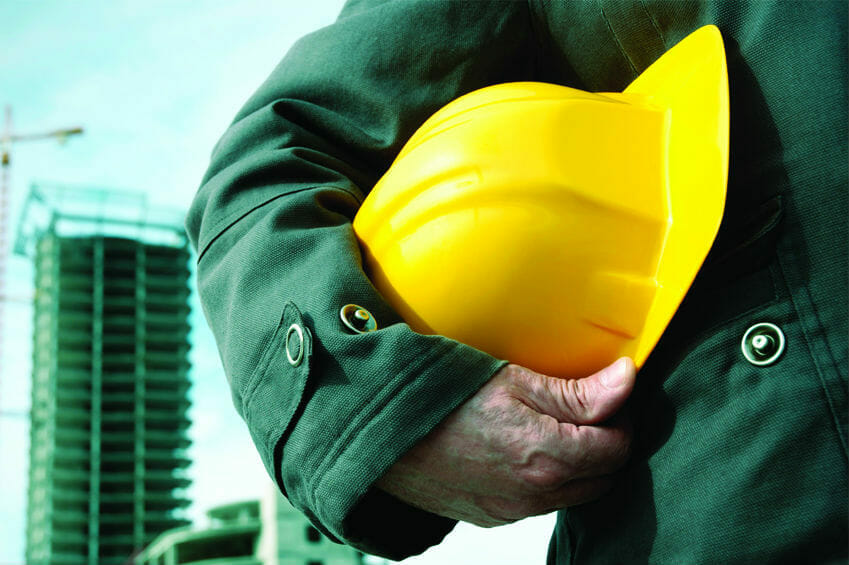Eighty-two construction workers died from electrocution in 2015, according to the Center for Construction Research and Training (CPWR), a figure that the Center calls “unacceptably high,” even though it represents a 39% reduction in construction industry electrocution deaths since 2003. In its report released November 1, the CPWR revealed that construction workers comprised 61% of all work-related electrocution fatalities in 2015.
Electrocutions are the fourth leading cause of death among construction workers in the U.S. The U.S. Bureau of Labor Statistics contributed data to the CPWR for its report so the Center could compile information from 2011 to 2015. In light of these alarming statistics, it’s crucial for construction workers to be aware of their rights and options in the event of a construction accident lawsuit. The report concludes that:
- Electrical contractors were involved in about 32% of electrocution fatalities (115 of 364), the most of any construction subsector.
- Electric parts were the leading primary source of electrocution (189 fatalities, or about 52%). Power lines, transformers, and convertors were the second leading sources (39%). But other causes of electrocutions to non-electrical workers included contact with machinery, appliances, power tools, portable lights, and defective power/extension cords.
- 105 electricians suffered fatal electrocutions, the most of any occupation. Power-line installers experienced the highest pro-rated electrocution deaths – 29.7 per 100,000 full-time workers.
- Almost 29% of electrocution deaths occurred among workers between the ages of 35 and 44 (the highest age-group percentage). Workers age 25 and under suffered the highest pro-rata number of fatal electrocutions – 1.2 per 100,000 full-time workers. As workers aged, the risk of electrocution significantly decreased, according to the CPWR report.
What can be done to Reduce Construction-Related Electrocutions?
“Many solutions can be implemented to prevent electrocutions among construction workers,” the report states. “Some include personal protective equipment like rubber gloves, nonconductive clothing, addressing common workplace violations, engineering controls like surge protection devices, safety measures like regular tool inspection and maintenance, and other precautionary measures such as using nonconductive ladders and cover-up equipment.” The final section of the report outlines additional measures for specific groups. The highlights of these suggestions include:
Contractors should:
- Comply with OSHA regulations on electrical safety
- Train (and monitor) employees on electrical safety
- Contact utility companies in advance to de-energize or insulate overhead power lines
- Allow work on live electrical circuits/parts only in accordance with a permit system which contains specific procedures.
Electrical workers should:
- De-energize and lock-out or tag-out electrical circuits/parts they are working on or near
- Work on live electrical circuits/parts only if they are certified
- Wear appropriate personal protective equipment and use proper tools when de-energizing or testing live electrical circuits and parts.
All other construction workers should:
- Make certain they are trained in electrical safety for the work they will do
- Ensure machinery and power tools are properly grounded or double-insulated
- Check all extension and power cords for wear and tear before use
- Disconnect the plug on any power tool or machinery before inspecting or repairing
- Keep at least 10 feet from live overhead power lines
- Keep metal objects away from live electrical circuits/parts.
If you or a member of your family suffered electrocution or an injury on a construction site due to someone’s negligence, contact the experienced attorneys with the accident and injury law office of Terry Bryant by filling out our online contact form or give us a call toll-free at (800) 444-5000.
Attorney Terry Bryant
 Terry Bryant is Board Certified in personal injury trial law, which means his extensive knowledge of the law has been recognized by the Texas Board of Legal Specialization, setting him apart from many other injury attorneys. The 22 years he spent as a Municipal Judge, Spring Valley Village, TX also provides him keen insight into the Texas court system. That experience also helps shape his perspective on personal injury cases and how they might resolve. This unique insight benefits his clients. [ Attorney Bio ]
Terry Bryant is Board Certified in personal injury trial law, which means his extensive knowledge of the law has been recognized by the Texas Board of Legal Specialization, setting him apart from many other injury attorneys. The 22 years he spent as a Municipal Judge, Spring Valley Village, TX also provides him keen insight into the Texas court system. That experience also helps shape his perspective on personal injury cases and how they might resolve. This unique insight benefits his clients. [ Attorney Bio ]


 Terry Bryant is Board Certified in personal injury trial law, which means his extensive knowledge of the law has been recognized by the Texas Board of Legal Specialization, setting him apart from many other injury attorneys. The 22 years he spent as a Municipal Judge, Spring Valley Village, TX also provides him keen insight into the Texas court system. That experience also helps shape his perspective on personal injury cases and how they might resolve. This unique insight benefits his clients. [
Terry Bryant is Board Certified in personal injury trial law, which means his extensive knowledge of the law has been recognized by the Texas Board of Legal Specialization, setting him apart from many other injury attorneys. The 22 years he spent as a Municipal Judge, Spring Valley Village, TX also provides him keen insight into the Texas court system. That experience also helps shape his perspective on personal injury cases and how they might resolve. This unique insight benefits his clients. [ 

